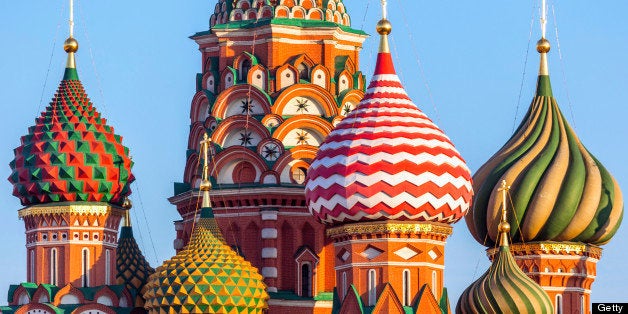
Russia's new anti-gay law has a loophole: The law, which has led to numerous arrests, beatings, and bans against LGBT people, specifically prohibits the "propaganda of non-traditional sexual relations," but homosexuality is as traditionally Russian as vodka and caviar.
Where does one begin the list of prominent LGBT Russians? Peter Tchaikovsky, one of Russia's foremost composers; Nikolai Gogol, one of its leading writers; from the world of dance, Diaghilev, Nijinsky, Nureyev; not to mention members of Russia's ruling classes, including Grand Duke Sergei Romanov, brother to the czar and mayor of Moscow from 1891 to 1905.
What could be more "traditional" than this list? Indeed, so "traditional" was Russian homosexuality that it was even seen as a distinctive symptom of Russian decadence by some revolutionaries. Indeed, none other than Ivan the Terrible (1538-1584) and Dmitry 'the Pretender (unk.-1606) were known to be homosexual, or at least to have had male lovers.
In fact, what is nontraditional is the suppression of sexual diversity, not its expression. Following the Russian Revolution, the regime under Lenin formally legalized homosexual acts (along with divorce and abortion), but Stalin criminalized them in 1933. So they would remain until 1993: officially illegal, yet tolerated on and off, depending on those in power. Which of these legal regimes is "traditional" and which is "nontraditional"? Is Stalin more traditional than Lenin?
The reality is that, as everywhere, sexual diversity in Russia is entirely traditional and entirely natural. Of course, contemporary labels -- "gay," "lesbian," "bisexual," "transgender" -- are culturally specific and of relatively late vintage. But the existence of same-sex relationships goes back as far as Russian history itself. Indeed, a few years ago, a 600-page volume containing 69 biographies of famous Russian lesbians and gays was compiled by Vladimir Kirsanov, editor of the gay magazine Kvir.
Now we all know that Vitaly Milonov, the most vocal of the anti-gay bill's sponsors, had homosexuality in mind when he introduced the bill. But a literal reading of the bill's actual language, coupled with even a passing glance at Russian history, does not agree.
Of course, it's unlikely that a Russian jurist will really read the law so cleverly -- although doing so would provide an "out" for moderates seeking to control the damage it has caused, which now extends to calls to boycott the 2014 Winter Olympics, Russian vodka, and Russian performance venues.
Yet even if such a literal reading never finds its way into a judicial decision, it serves as an important reminder that although homosexuality goes by different names in different places and at different times, it is a traditional part of every culture that the human race has ever created. Sexual diversity is, like other forms of diversity, an intrinsic, natural part of the human experience. Alas, so are efforts, like Russia's, to deny it.
